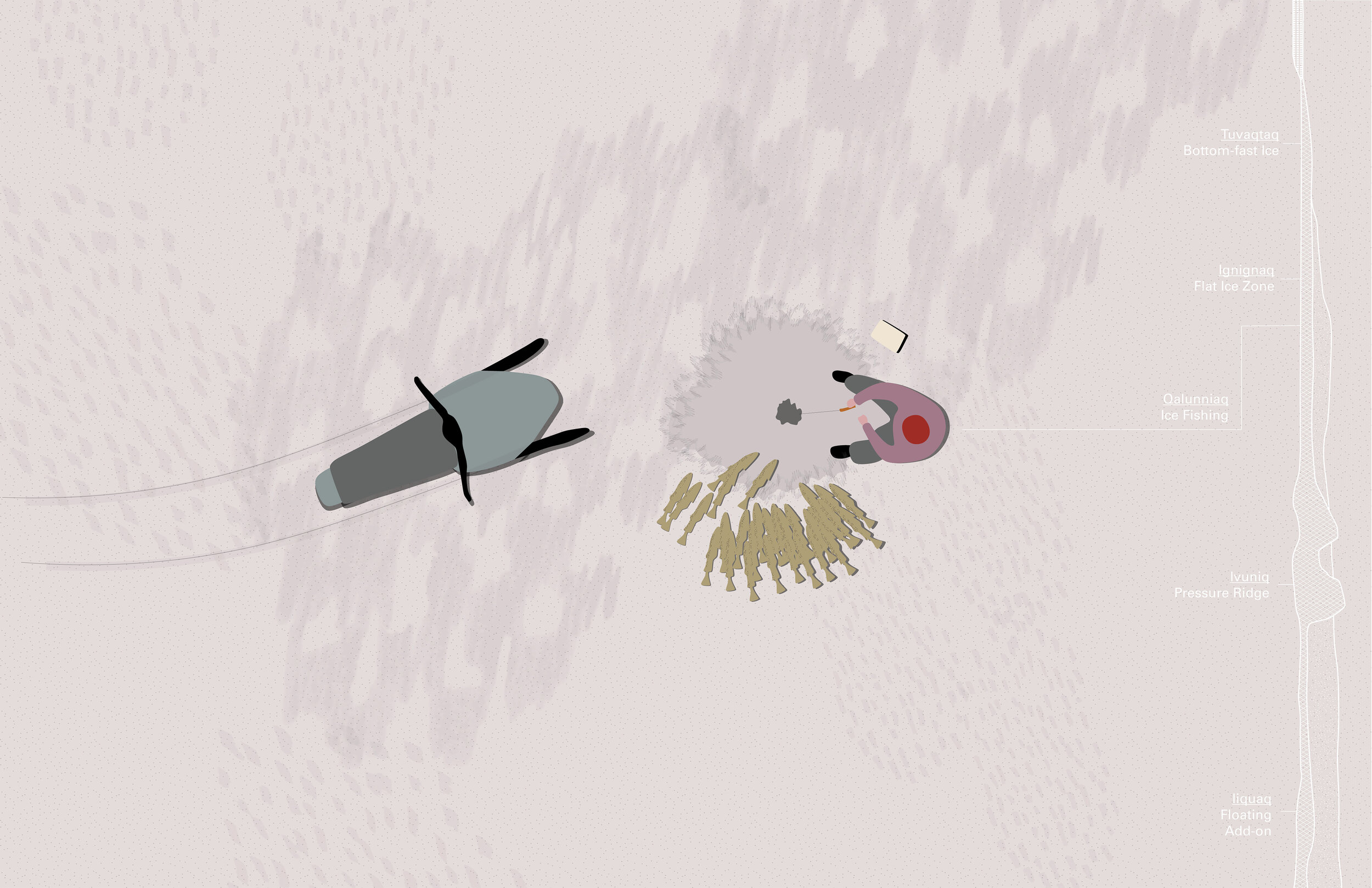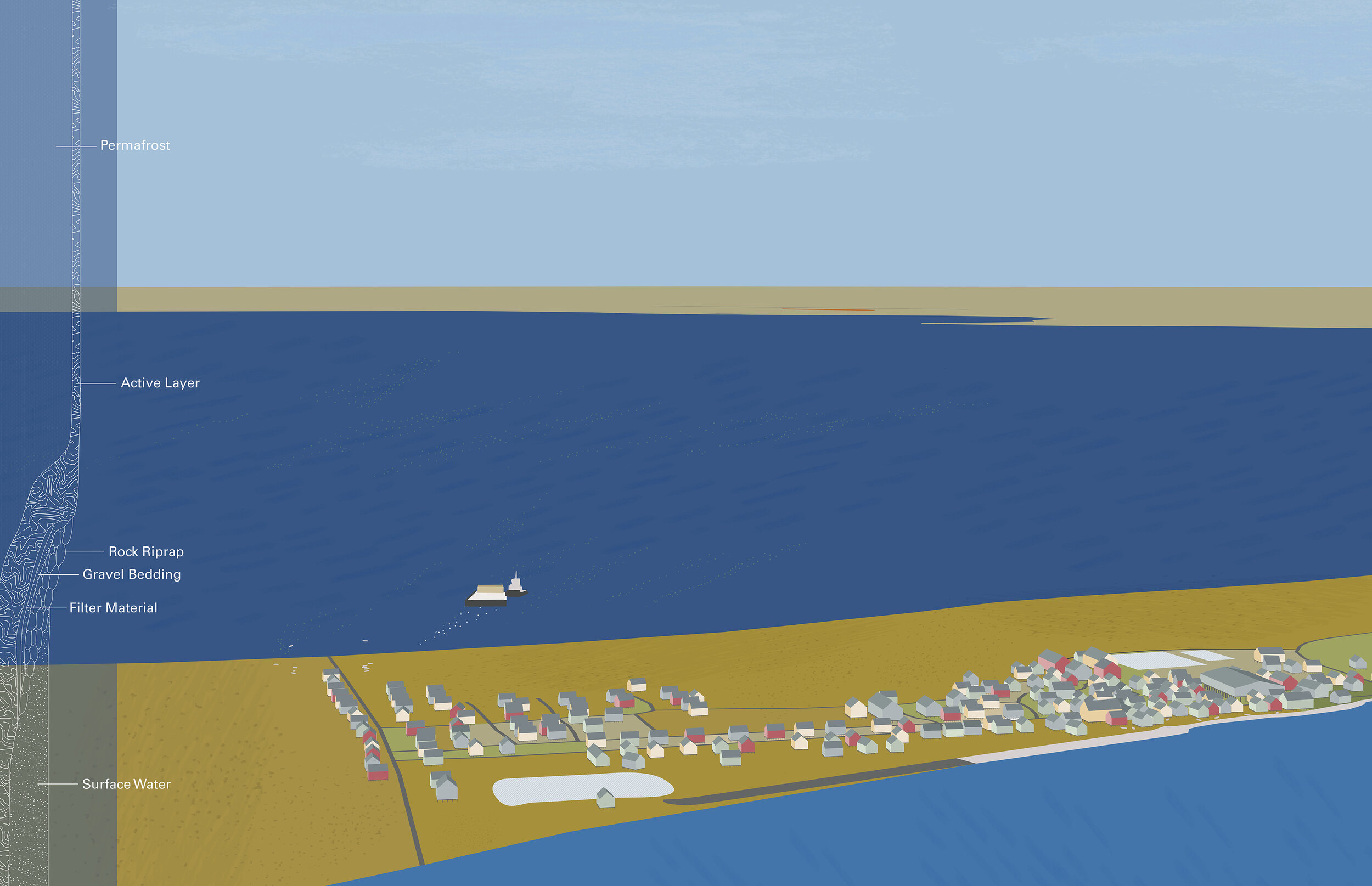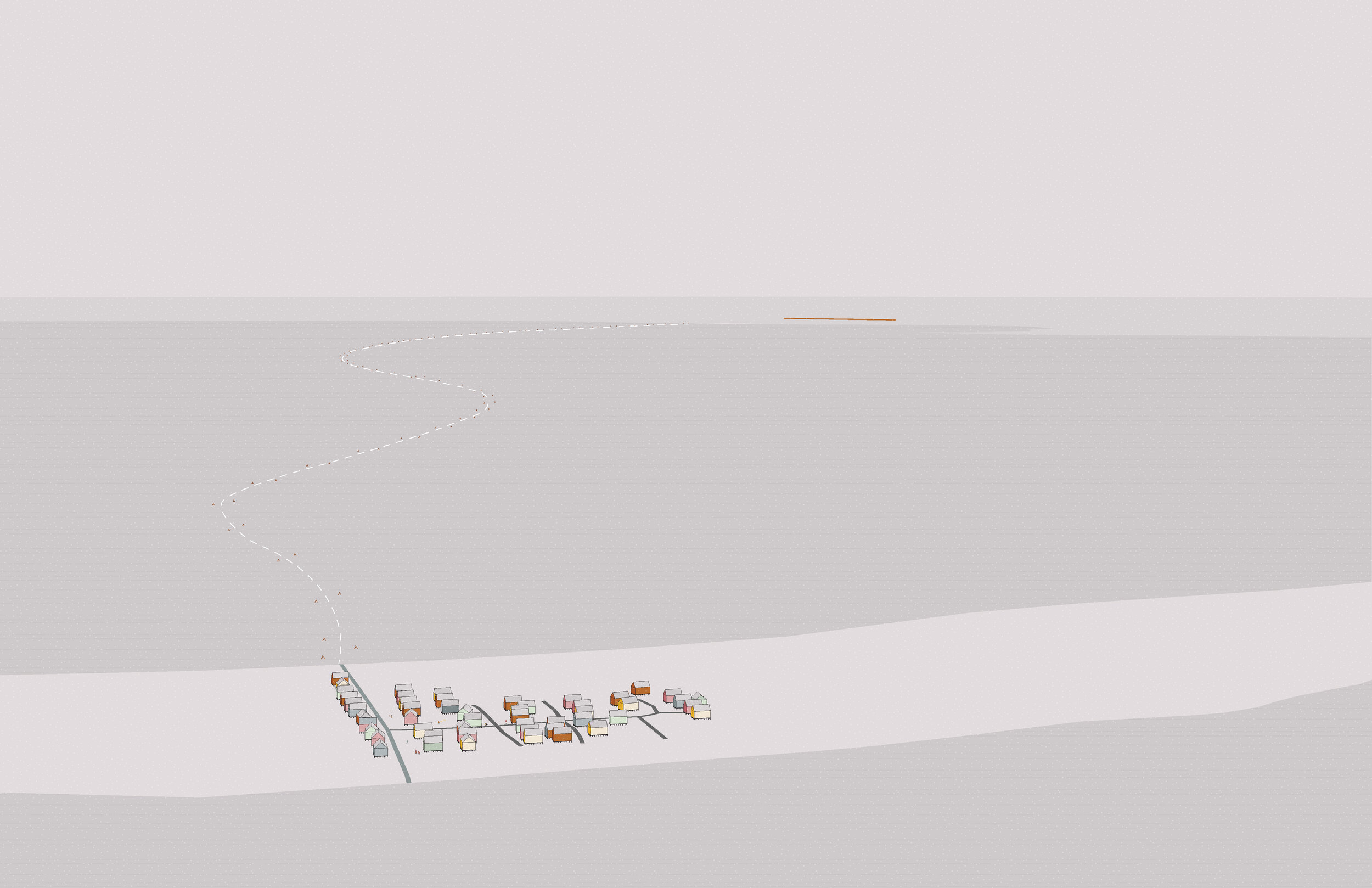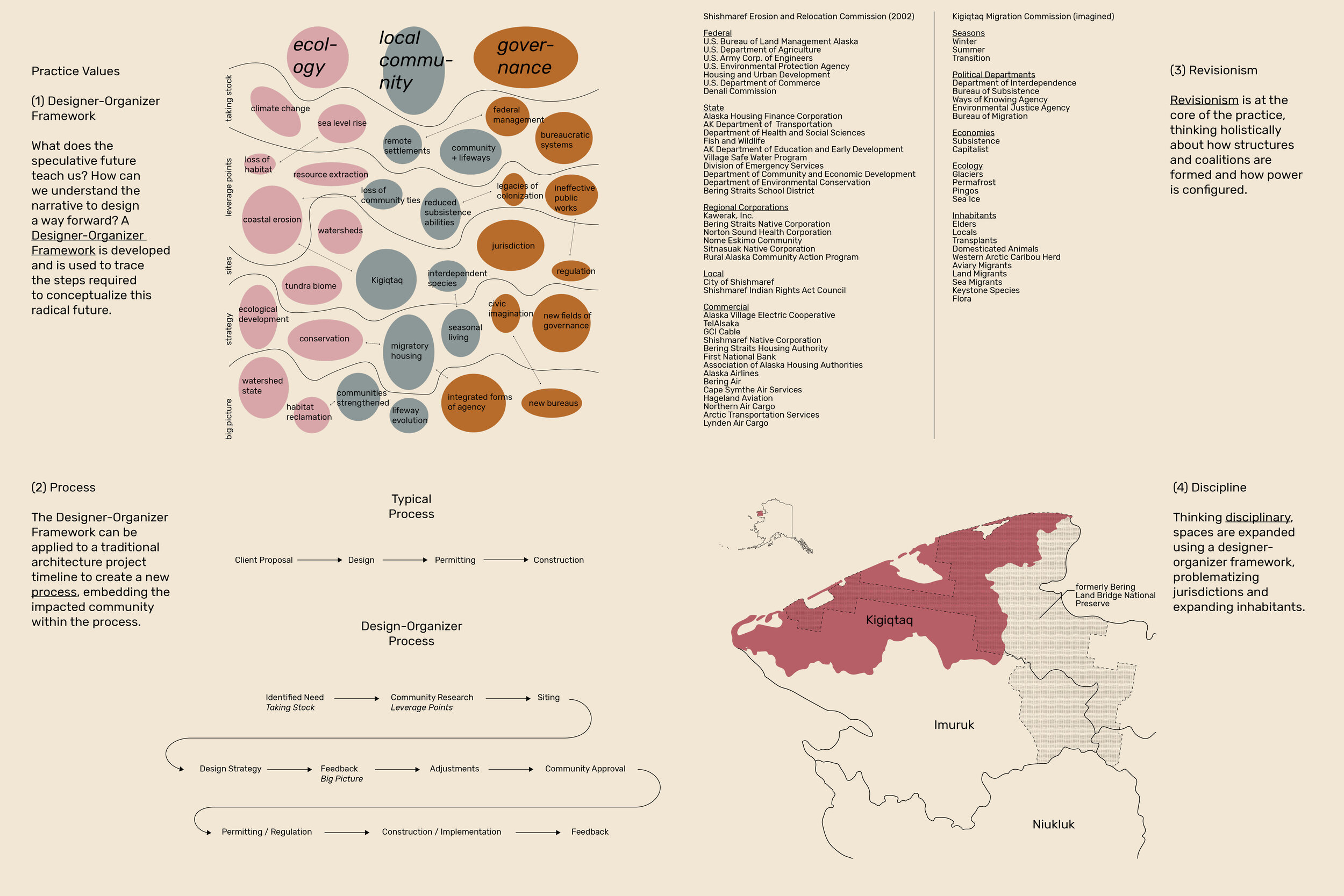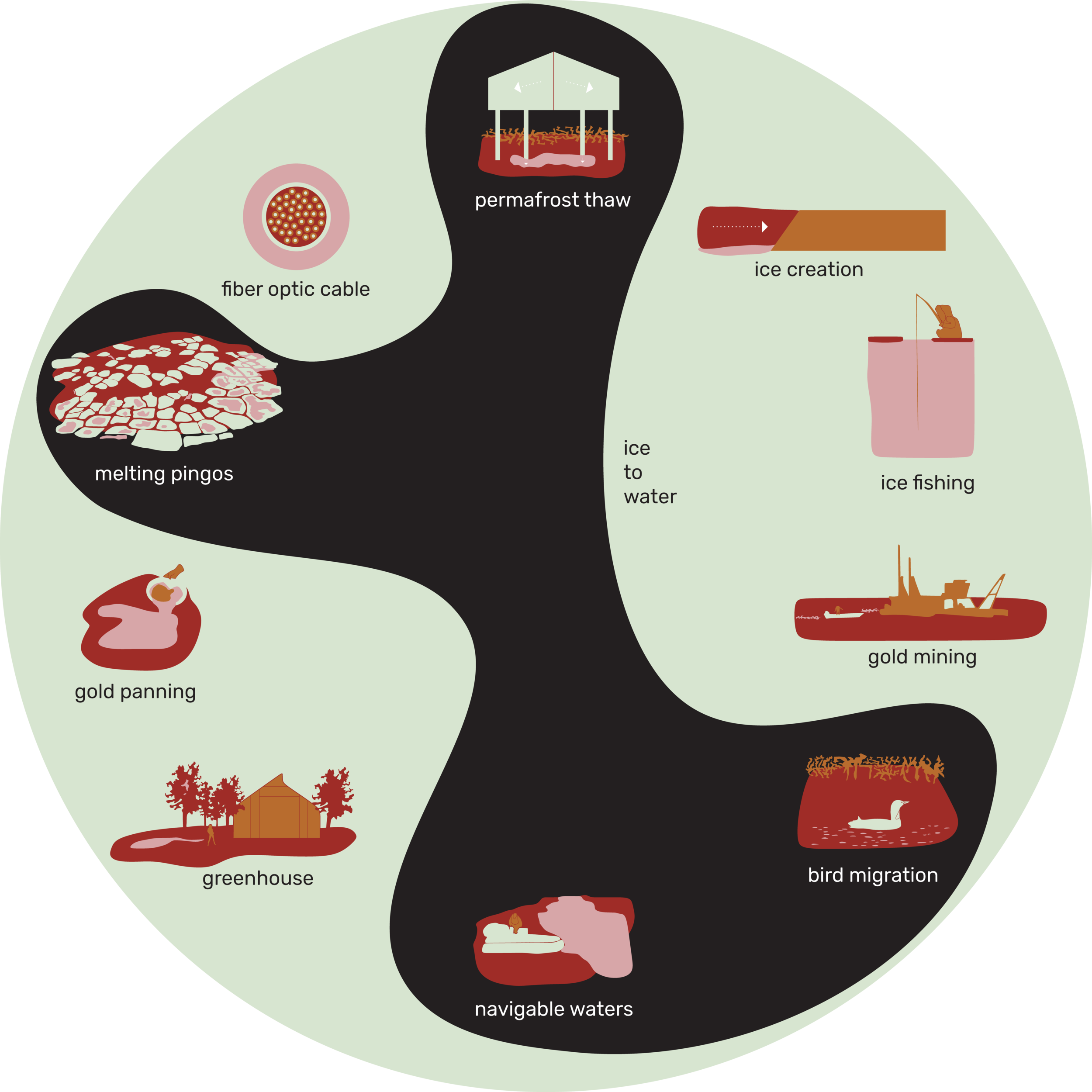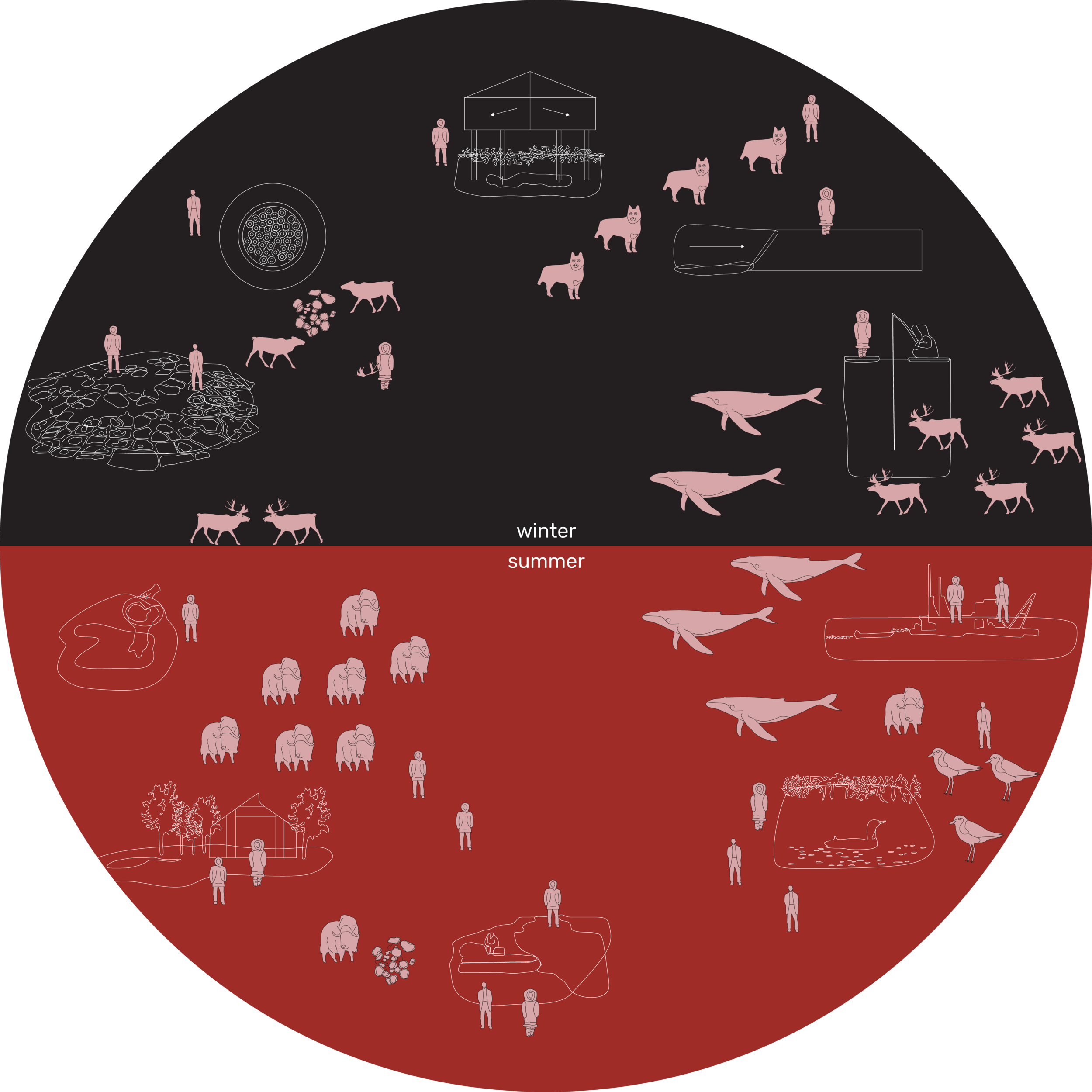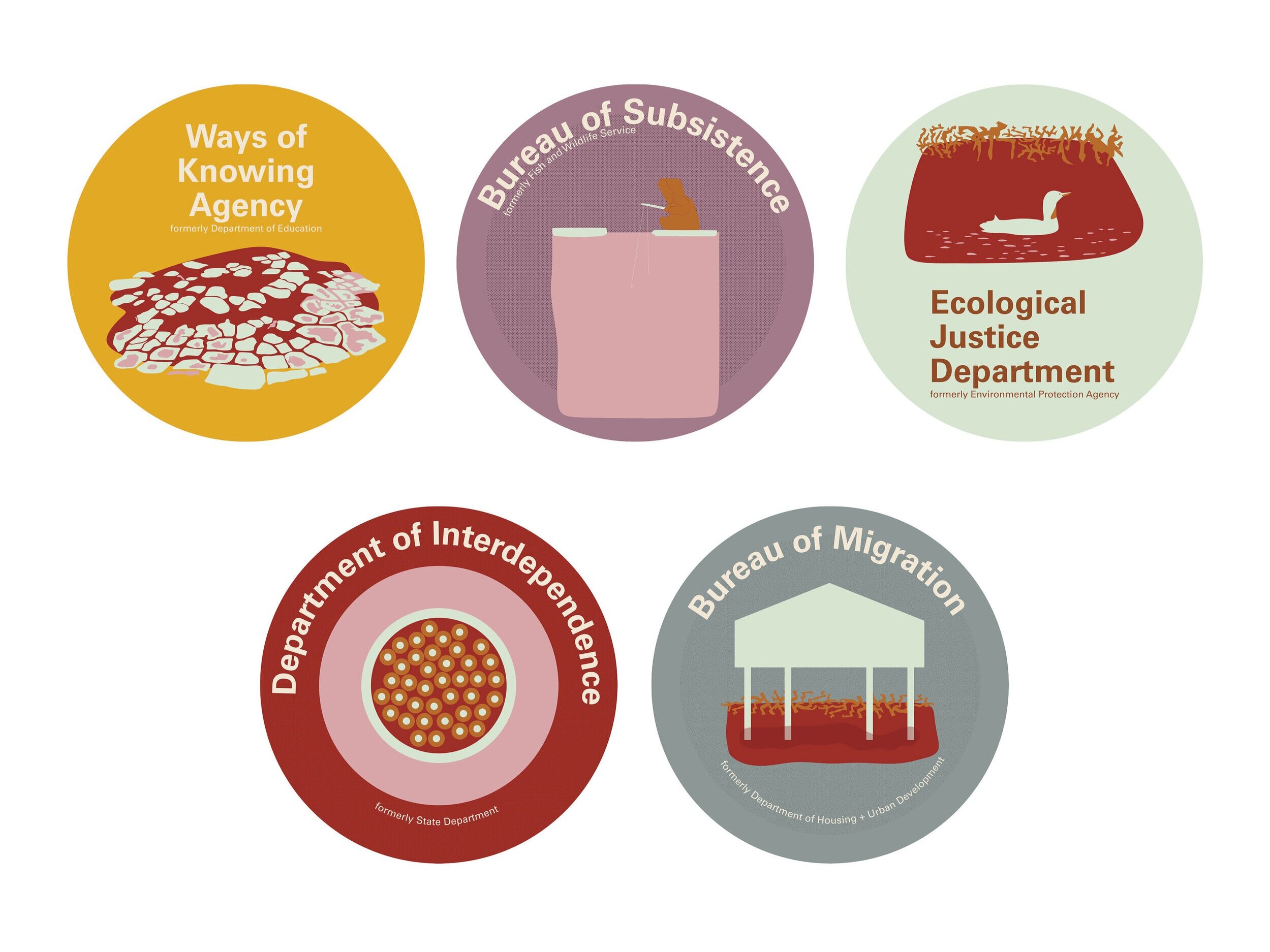Practice
Shishmaref, Alaska / Fall 2019-Spring 2020 / Thesis / Advisor Amy Kulper / Community Power, Policy Design, Environmental Justice
+ thesis book can be found here
My thesis work creates structures that enable communities to be agents of their own change. This work is grounded by my own experience in Nome, Alaska, where in 2016 I was a summer intern for the National Park Service in Bering Land Bridge National Park. In Alaska, I learned how people live remotely and precariously, and through them, understood the importance of being connected to our natural world.
Ice fisherwoman
Governing hierarchy
This thesis is both a project and a practice. The project inhabits this work in a real place, imaging community power in a remote city in Alaska. The practice learns from the project and creates the framework for agency, developing my role as a designer-organizer.
Salmon drying cycle
Long view of Kigiqtaq (Summer)
The project speculates a justice oriented future of the island community of Kigiqtaq (formerly known by its colonized name, Shishmaref) as it mitigates encroaching sea level rise- the island they live on is being eroded away. The city of Kigigtaq is remote but urban, the population is indigenous and young, similar to many other communities in Alaska.
The project starts by redrawing the boundaries of the state to reflect local ecological systems. Alaska is divided into watershed states, which bound jurisdictions according to how water drains in a basin. Within my new jurisdictions, private property is abolished and land trusts govern land use. This model shifts the power from a remote governing structure to a hyper-local one. Community power is also located in new agencies such as the Ways of Knowing Agency, which replaces the Department of Education and prioritizes indigenous knowledge taught by elders to younger generations.
The practice learns from the project and creates the framework for my own agency, for developing my role as a designer-organizer, a practitioner who focuses on redesigning relationships of place and power. It interrogates architectural conventions such as project timelines, scope, expertise, and the limits of the discipline, offering a template for future design engagement. The role of the designer-organizer is to amplify local perspectives and create spaces of care, attentive to the existing lifeways.
Freeze-thaw cycle
Lifecycle
Migrated Kigiqtaq
The work of a designer-organizer is to critically examine not just what is created (project), but how (practice). Revisionism is at the core of this thesis work, which overturns conventions, clients, and buildings in favor of spaces inhabited by human and nonhuman beings, through social and physical structures, toward just futures.
Bureau of Subsistence Meeting (muskox and elders)
